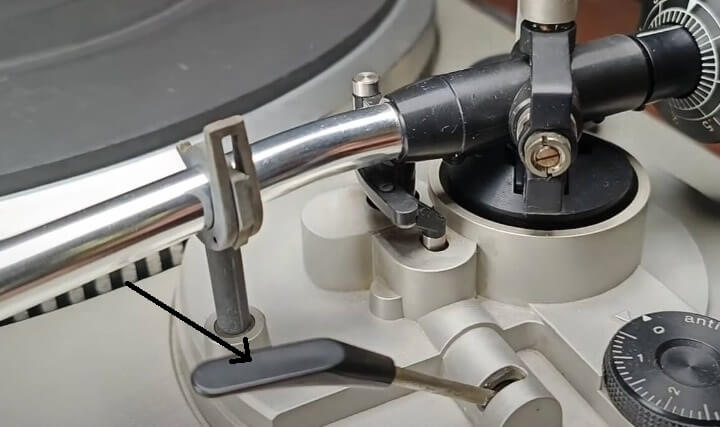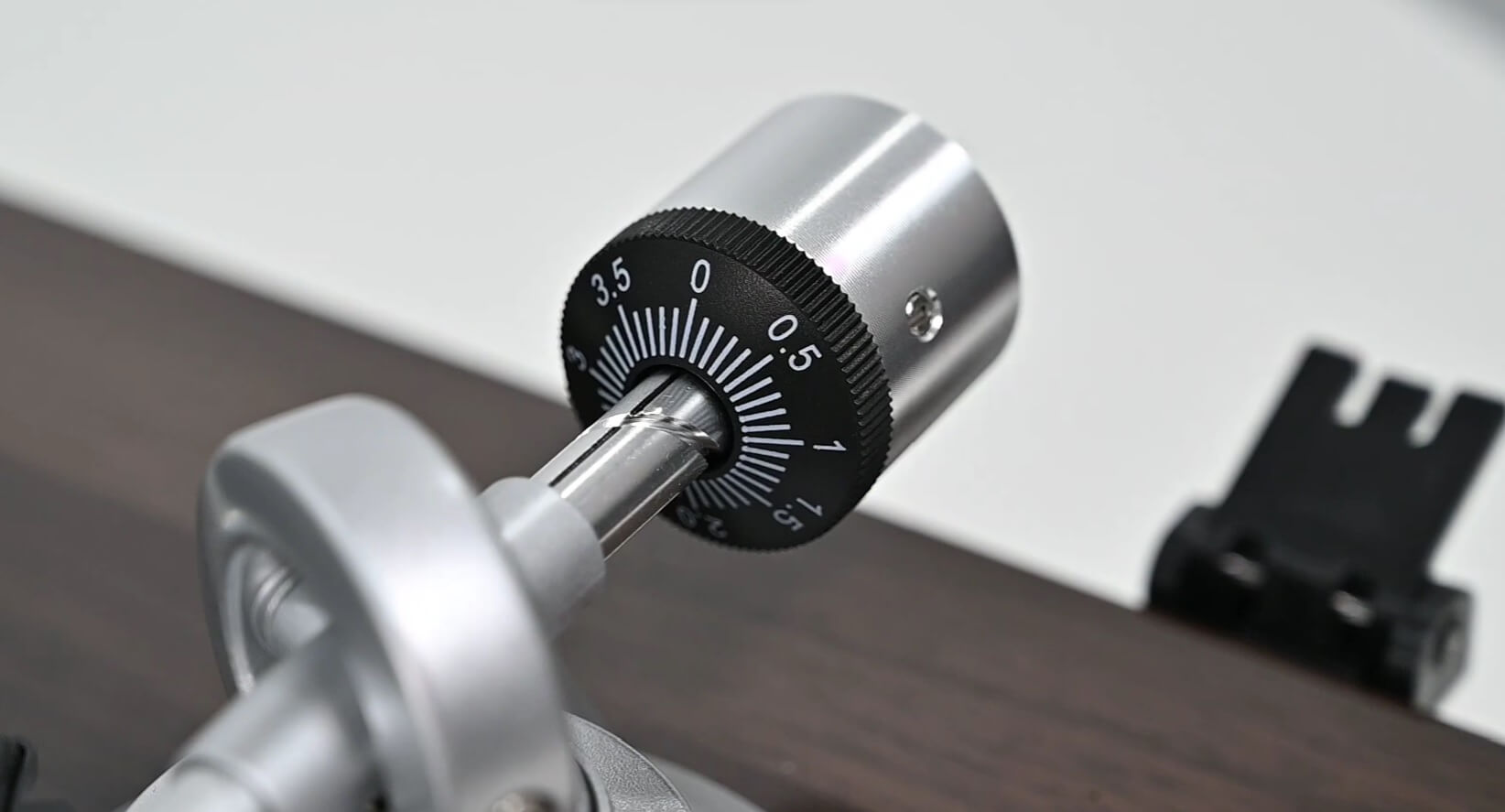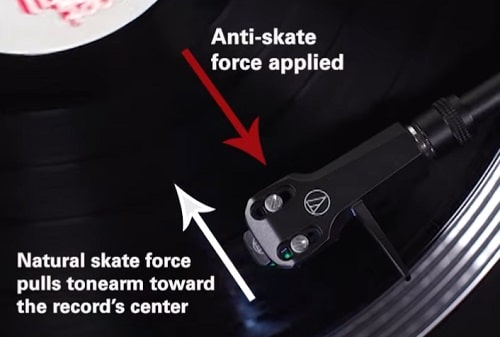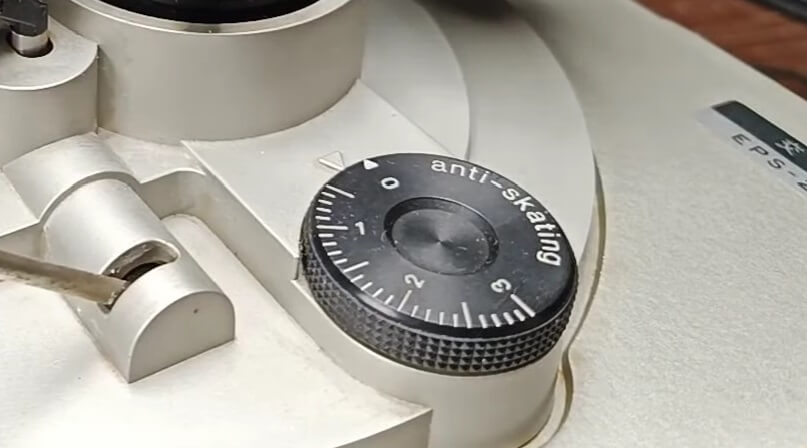Well, I know the terms like “tracking force” and “anti-skate” in the turntable setup look scary to a lot of people. Even, I was afraid too when I entered the vinyl world.
When I was setting up my first turntable, I didn’t know about these terms and I was just playing with my turntable and the sound coming out of my speakers is quite bad. So, I called my friend and asked him for his help. He came to my home and directly asked me what’s the tracking force of the cartridge. I was like what the hell does that mean? He laughed a bit and then explained the concept to me.
Now, I think it’s my turn to play the role of my friend to you.
So, I have drafted this article in which I have explained the whole tracking force and anti-skate concept and also shared a step-by-step guide to adjust the tracking force and set anti-skate on the turntable in simple words.
But, before going further let’s learn what tracking force in turntable means.
Note: The tracking force adjustment process comes after a tonearm is perfectly balanced so I suggest you read this article and balance your turntable tonearm perfectly before proceeding further with the article below.
What is Tracking Force & Why It’s Important:
In simple words, the tracking force is the force or weight that your stylus is putting on the vinyl record.
The perfect tracking force adjustment is required to help your stylus fetch audio signals from the record grooves properly, otherwise, you might face a lot of issues.
Suppose, the tracking force is too light then it becomes difficult for your stylus to stay in the grooves thus stylus won’t be able to fetch audio signals properly and it can even jump on your record which eventually damages the stylus tip and causes record skipping issues.
On the other hand, if the tracking force is too heavy then your stylus will be forced to run deeper in the grooves and the force won’t let your stylus move freely thus the audio signals are not fetched properly and your speakers won’t sound good.
On top of that, heavy tracking force can cause damage to your stylus and record grooves.
So, the perfect adjustment of tracking force is very important to make your setup sound good and also avoid damage to the stylus and records.
Now, the question is what is the perfect or recommended tracking force?
What is the Recommended Tracking Force:
Well, every phono cartridge requires a different tracking force suitable for reading the audio signals from the grooves. So, the recommended tracking force depends on the cartridge you are using.
To find the recommended tracking force of your cartridge, you can check the manual or you can google your cartridge model.
That’s it, you will get the required information.
I hope you understand the concept of tracking force. Now, I am going to list the tools or information required to adjust the tracking force of your turntable.
Things Required to Adjust Tracking Force:
- Cartridge’s recommended tracking force
- Stylus force gauge or digital gram scale
Now, let’s discuss how to check the tracking force of your turntable’s stylus.
How To Check Tracking Force Of Your Stylus:
1) Unplug the turntable or record player from the power source & remove the record from the turntable’s platter if it is there.
2) Set the cueing device or tonearm lift liver in an upward position.
4) Gently, move the tonearm over the platter, put the stylus force gauge or digital gram scale on the exact place where the stylus sits on the record, and set the cueing device in a downward position.
5) You will see the force on the gauge or scale.
Well, that is the tracking force that your cartridge or stylus is putting on the record.
If the gauge is showing the recommended tracking force for your cartridge then you are good to go otherwise, you need to fix the tracking force right away.
How to Adjust The Tracking Force Of Your Stylus:
Here, I am assuming that you already have the gauge or scale sitting on the platter underneath your stylus, the scale is showing some metrics and you already found the recommended tracking force of your cartridge.
Important: Before proceeding further, I want you to set up the counterweight settings according to the information mentioned in step 8 of the tonearm balancing article (The article link is mentioned above).
I hope you have read the mentioned article, adjusted your counterweight accordingly, and set the counterweight dialer to 0.
Now, follow these steps to fix it.
For Turntable With Counterweight:
You can adjust tracking force in two ways:
Using Dialer:
In the image above, the black part is the dialer and the silver part is the counterweight. Once, you set up the counterweight according to my recommendation then you just need to turn the counterweight towards the pivot point of the tonearm until the dialer reaches the mark of recommended tracking force.
Using Tracking Force Gauge or Scale:
Adjust the counterweight until you see the recommended tracking force of your cartridge on this tracking force gauge or scale.
For Turntable Without Counterweight:
If there is no counterweight on your turntable, the tonearm and tracking force adjustment are already configured by the manufacturer according to the cartridge supplied with the turntable or record player.
But, if you changed the cartridge and the tracking force recommendation of the new cartridge is higher then you can follow the method below:
As there is no counterweight, you need to take the help of other lightweight objects or simply go with pennies.
Start by placing 1 penny on the cartridge’s top and check whether the tracking force comes near the manufacturer’s recommended force or not.
Do the adjustment accordingly and make sure the tracking force is near the recommended one if not exact. After you are done, try playing your records again.
Congratulations, you have successfully adjusted the tracking force of your turntable cartridge. Now, the next step is anti-skate calibration or adjustment.
First, let’s discuss what is anti-skate setting on turntables.
What is Anti Skate On Turntable:
As the name suggests, the anti-skate on the turntable prevents the tonearm from skating over the platter.
I know this is confusing but let me explain the concept in simple language.
The spinning of the record forces the stylus to go toward the center. So, if your stylus is running on the record then this force might cause your stylus to continuously be in touch with the left channel.
This continuous contact of the stylus with the left channel will restrict the stylus from fetching audio signals from the right channel properly thus affecting the sound quality and it also causes the stylus and records to wear out faster.
So here, the anti-skating feature comes into the picture.
The anti-skating puts outward pressure on the tonearm and maintains a proper balance between inward and outward force which helps in keeping the stylus in the center of the grooves so that the stylus can fetch audio signals from both channels and your turntable can output perfect sound quality.
I hope you have understood the anti-skate feature on the turntable so now, let’s learn how to calibrate the anti-skating on the turntable.
How to Set Anti-Skating on Turntable:
Adjusting or calibrating the anti-skate on the turntable is the simplest and easiest adjustment in the whole turntable setup.
All you need to do is to move the dialer to the tracking force that you have set above or in simple words, the recommended tracking force of your cartridge.
For example: If your cartridge’s recommended tracking force is 2g and you have calibrated your turntable according to 2g, then all you need to do is set the anti-skate dialer to 2.
That’s it. No further steps are required for calibrating anti-skating on the turntable.
Frequently Asked Questions:
Q1- What should the tracking force be set at?
The tracking force depends on the cartridge you are using. Every cartridge has its own recommended tracking force that helps the stylus fetch audio signals from the grooves perfectly.
So, you should check the cartridge’s specifications in the manual or contact the manufacturer to know the recommended tracking force of the cartridge you are using.
Q2- How to tell if the tracking force is too much or too high?
If the stylus looks similar to the image below then your tracking force is way too high.
Well, the best way to check the tracking force is to use a stylus gauge and match the reading it outputs with the recommended settings of your cartridge.
Q3- How does tracking force affect the sound?
Too heavy tracking force will force the stylus to run deeper inside the grooves and that force won’t allow the stylus to move freely thus, you will hear distorted, scratchy, and muddy sound from your speakers.
And, in case of tracking force is too light, the stylus won’t maintain its position inside the grooves and it can jump over the records while spinning.
Both cases will affect the sound quality to a greater extent.
Thus, a perfect tracking force adjustment is required to hear perfect sound quality from your speakers.
Q4- How to Adjust tracking force Victrola & Crosley record players?
Victrola and Crosley record players don’t have a counterweight dialer so you can’t adjust the tracking force yourself. However, these units come with a pre-adjusted tracking force which weighs over 5 grams.
Q5- Is 3 grams too much tracking force?
According to the majority of audiophiles and my experience, tracking force above 3.5 grams is too much.
In the past, there were record players whose tracking force was over 5-6g and I have seen many people debating on the same fact and saying to everyone that tracking force over 3.5g is good.
So, to finish this debate once and for all, I have researched a lot and figured out that the majority of audiophiles consider tracking force over 3 grams is too much.
On top of that, nowadays, the cartridge manufacturers have manufactured MM or MC cartridges that have recommended force ranging between 1.5g to 2.5g so there is no need to go over 3 grams.
We have shared the simplest guide to check tracking force, adjust tracking force, and anti-skate adjustment or calibration on your turntable. If you have any kind of question then please comment below. We will get back to you as soon as possible.






